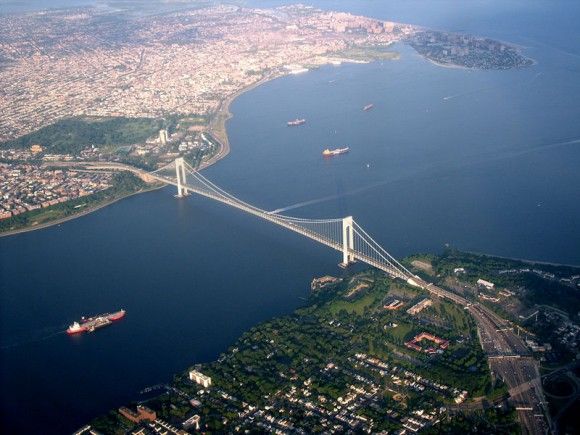$235.7M Awarded For Verrazano-Narrows Bridge Upper Deck And HOV Lane Project

From the offices of the Metropolitan Transit Authority:
The Metropolitan Transportation Authority (MTA) announced Sunday that Tutor Perini has been awarded a five-year, $235.7 million contract to replace the original 1960s upper level roadway of the Verrazano-Narrows Bridge, which, once completed, will include the agency’s first reversible high occupancy vehicle lane.The new reversible lane will connect with State Department of Transportation’s HOV lanes on either side of the bridge, providing a continuous HOV lane from the Staten Island Expressway straight through to the Hugh L. Carey Tunnel for the first time and save time for thousands of daily bus and HOV car commuters.”Completing this last piece of the Staten Island to Manhattan HOV lane across the Verrazano-Narrows Bridge will have an enormous beneficial impact on regional mobility,” said MTA Chairman and CEO Joseph Lhota. New York City Transit Staten Island Express buses carry an average 30,000 riders to and from Manhattan each weekday.”This project is a critical part of our strategy to keep the bridge in a state of good repair for the estimated 190,000 motorists who use it daily, and has been carefully planned so it will impact daily traffic as little as possible,” said MTA Bridges and Tunnels President Jim Ferrara.
The bridge’s upper level will remain open to traffic while the new roadway is installed, and the three current lanes of traffic will be maintained during peak morning and afternoon drive times using a movable barrier.
“The upper level roadway is nearing 50 years old and has reached the end of its useful life and must be replaced,” said MTA Bridges and Tunnels Chief Engineer Joe Keane. The current concrete roadway deck will be replaced with a lighter, steel orthotropic deck that will have a significantly improved life span than the original deck system.
In order to verify the performance of the new deck’s design, a full scale prototype underwent several years of rigorous testing and successfully endured more than 5 million cycles of simulated truck traffic loading at Lehigh University’s Advanced Technology for Large Structural Systems (ATLSS) engineering research center.
“The advantages of an orthotropic deck versus a traditional concrete deck are that orthotropic decks are a more durable, lighter and stiffer deck system, improving seismic and wind performance of the bridge,” explained Verrazano-Narrows Facility Engineer David Riggs. “An added benefit is that the deck system is a continuous structure without expansion joints, which tend to leak and accelerate deterioration of the supporting steel below,” Riggs said.
Tutor Perini, which has local offices in New Rochelle, will help create the reversible HOV lane by reconfiguring the median, side barriers and curbs on both sides of the bridge. The contractor has successfully completed several other projects for MTA Bridges and Tunnels, including major roadway deck reconstruction at the Bronx-Whitestone Bridge and Robert F. Kennedy Bridge.
The project will also include a new drainage system, new steel sign structures, new LED lighting on both levels of the bridge, rehabilitation of the finger joints and painting of the support structures. Preparatory work will begin in 2013 and roadway construction in 2014. The project is expected to be completed by the end of 2017.
A separate contract will be awarded in 2013 to construct a new ramp on the Brooklyn side of the Verrazano-Narrows Bridge that will connect the bridge’s new HOV lane to the New York State Department of Transportation’s Gowanus Expressway HOV lane.




